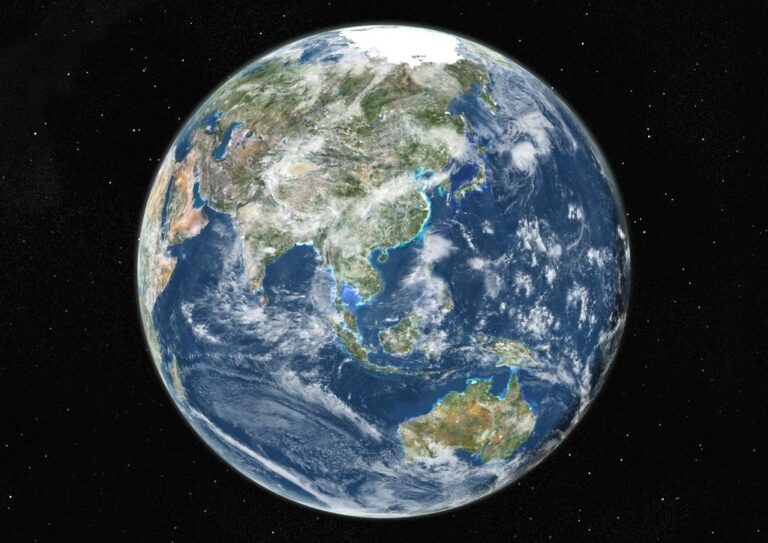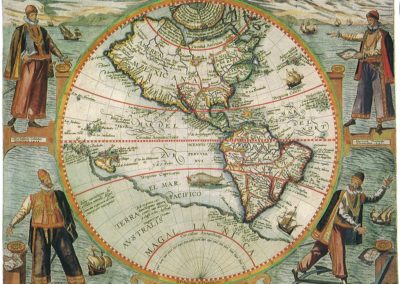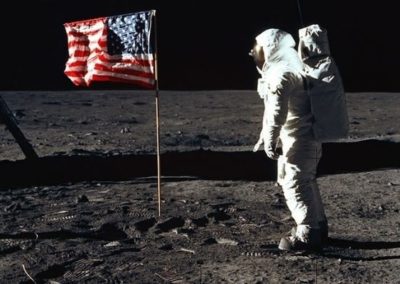Earth – There’s No Place Like Home
Our world may be familiar to us, but it’s the strangest one we know.
By: James Fite | August 20, 2025 | 893 Words

(Photo by Planet Observer/Universal Images Group via Getty Images)
Of all the planets orbiting our sun, Earth is the strangest. Is that an odd thing to say – that the planet we’re most familiar with is the most unique? All worlds are somewhat different, but ours stands out as remarkably different from any other we know.
Earth Is Home – To All Known Life
Is there life on other planets out there somewhere in the universe? Maybe – but every living organism we know lives right here on Earth. There are eight planets in our solar system, and astronomers have discovered at least 5,000 other planets orbiting other stars, according to NASA. But there has not yet been found proof of currently existing life on any of them but Earth. Of course, that doesn’t mean there isn’t life on some unknown world – or even that we might have missed something much closer to home!
Several factors contribute to our planet’s habitability. Probably the best known is location. You may have heard of the Goldilocks Zone. Remember the tale of Goldilocks and the three bears? At one point in the story, the title character discovers three bowls of porridge after entering the home of the bears, who happened to be out walking in the woods while they waited for their breakfast to cool. The first porridge she tasted was too hot; the second was too cold. The last one, however, was neither too hot nor too cold – it was just right. Well, being too close to the sun makes a planet too hot for life, while being too far away makes it too cold. The Goldilocks Zone, however, is just right – and that’s just where Earth is.
 Our orbit around the sun is circular primarily – many other planets have much more elliptical paths – but it isn’t a perfect circle, so our distance from the sun varies. At the closest point, which we call the perihelion, we’re about 91 million miles out. At the farthest point, or the aphelion, we’re around 94.5 million miles away. On average, that is 93 million miles from the sun. Astronomers call that value – 93 million miles – one Astronomical Unit, or AU, and use that as a unit of measurement to compare distances in space. Of the eight planets in our system, Earth is the third closest to the sun.
Our orbit around the sun is circular primarily – many other planets have much more elliptical paths – but it isn’t a perfect circle, so our distance from the sun varies. At the closest point, which we call the perihelion, we’re about 91 million miles out. At the farthest point, or the aphelion, we’re around 94.5 million miles away. On average, that is 93 million miles from the sun. Astronomers call that value – 93 million miles – one Astronomical Unit, or AU, and use that as a unit of measurement to compare distances in space. Of the eight planets in our system, Earth is the third closest to the sun.
But despite what you may have heard about business and real estate, location isn’t everything. Earth is home to all known life in the universe because it’s in just the right spot, with the right type and thickness of atmosphere, liquid water, solid land, and a proper magnetic field to protect us and our atmosphere from solar radiation. Earth is also very large, relative to other planets of the inner solar system, and that provides a stable and resource-rich environment. Our axial tilt and almost circular orbit around the sun help keep the seasons regular. And many factors, from plate tectonics to the presence of the moon, play a role in regulating the planet’s climate.
In short, Earth has a combination of benefits that no other planet has, and they all work together to allow life as we know it to thrive.
What’s in a Name?
All seven of the other planets in our solar system – and Pluto, which used to be considered a planet – have something in common with each other, but not Earth. They’re all named after Greek and Roman gods and goddesses. The name Earth, however, comes from Old English and German and means “the ground.” For a long time people realized that the Earth was round (not flat), but they thought that the sun, moon, stars, and the other planets revolved around the Earth. This geocentric model placed Earth at the center of the universe.

Moon (Photo by Nicolas Economou/NurPhoto via Getty Images)
We know now that the moon does orbit Earth, but that our planet and the others in our system orbit the sun (heliocentric model).
But at the time that ancient astronomers discovered the other planets in our system, they thought of Earth as simply the ground. These other bodies in the sky, however, were exotic and far away. Many were discovered by Greek and Roman astronomers, which means they got to name them – and as the Roman empire spread across the known world, the Roman names stuck.
Earth may not have been named after a prominent figure in Greek or Roman mythology, but don’t feel left out. Our world is where all the myths and legends were born! And while the ancients were in awe of other worlds, and composers, poets, and storytellers have written about them for millennia, there’s no better place to live than right here on Earth.

- Earth is the third of eight planets in our solar system, as measured by distance from the sun, and it’s close enough but also just far away enough to allow for life.
- Earth is the only known planet that has life. There’s more to that than location. Everything from plate tectonics to the presence of liquid water and our magnetic field contribute to habitability.
- When early astronomers discovered the other planets in our system, they named them after gods and goddesses. Earth, however, was always just “the ground.”
















